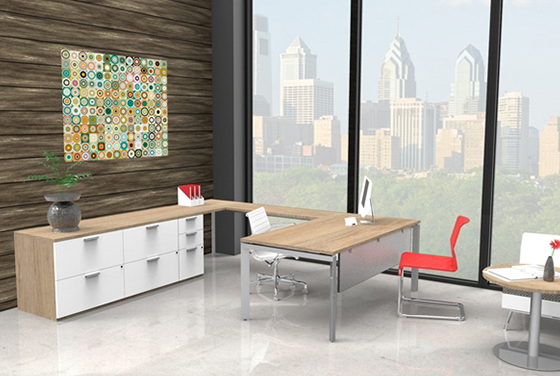
As new office trends like hybrid formats and hot desking begin to gain traction in a changing post-pandemic work environment, we feel the time is ripe to take a sober look at the last big office trend of the last decade: the open office space.
Nascent startup businesses were quick to build their office around an open concept design, touting its ability to promote collaboration and interactivity. And yet, years later, it’s clear that open offices have not been able to supplant the traditional private offices that remain in use today.
To compare the two, we’ve listed the top characteristics of a professional workplace to determine which is better: open offices or private offices. Let’s take a look:
Collaboration
Winner: Open Office
The heart of collaboration lies in interaction, and the best interaction is always face to face. That’s the unarguable truth of the open office space: It’s a setup that facilitates interactions all day long.
Employees from different levels engage on equal footing. Team workers can quickly communicate on shared projects. Having everyone in the same place makes your office easier to manage. And, by doing away from a structured environment, companies are encouraging their employees to creatively engage in freeform thought.
For these reasons, it’s easy to say that open offices are better for collaboration.
Privacy & Focus
Winner: Closed Office
Cubicle-based employees may feel their work environment is isolating, and there’s a good reason for that—because that’s what they do. Partitions and walls may hinder opportunities for collaboration, but they’re good at creating individual workspaces that give their employees a sense of privacy.
Closed office spaces create individual spaces where people can feel a sense of permanence; employees enjoy having a space that is devoted to them, and will personalize this space with items like family photos and plants. What’s more, a personal work space will help employees focus on their work by limiting workplace distractions, thereby increasing productivity.
As such, a closed office is the clear winner when it comes to privacy and focus in this stand-off.
Costs & Expenses
Winner: Open Office
Due to their proliferation among competitive startup businesses, an open office space is often wielded as a symbol of power and authority. Be that as it may, an open office can also be a good choice for business economic efficiency.
In this way, an open office made up of 100 employees will take up less space and use less resources than a closed office containing the same number of employees.
While this may not apply for larger companies with equally large budgets, an open office is generally better for costs and expenses.
Morale & Environment
Winner: Open Office
Open office spaces are great for boosting morale among employees. It allows for more face-to-face encounters and encourages social interaction; work becomes a lot more fun when you are able to socialize with your colleagues. Not only that, open office spaces are better at providing bright, cheery environments.
On the other hand, employees working within the cramped confines of a traditional office are left with the water cooler as the main source of their social interaction.
For morale and environment, we give the upper hand to the open office.
Conclusion
Winner: Tie
It may seem as though open offices win by a wide margin from this comparison, but the truth is that the best type of office for your workplace is the one that best suits your needs. Ask yourself:
- How important is collaboration to your business?
- How much of a priority is employee productivity?
- What kind of company culture do you want to create for your employees?
But, more than that, we’ll have to admit that making this type of comparison is becoming outdated; offices keep evolving to adapt to the times, meaning that office needs are changing as well.
Instead of closed or open offices, some businesses are shifting to a hybrid model that adopts characteristics from both styles. What’s more, the continued popularity of working from home is redefining how businesses run their operations.
The blurring of definitions also applies to the way office furniture has become more dynamic to suit a wider range of needs. Cubicles are designed to better fit with their workplaces with integrated designs and allow for greater interactivity among workers. Meanwhile, benching systems have become more like cubicles by adding more privacy and intimacy.
Are you looking to upgrade your office space? Are you looking for ways how you can optimize your workplace? Contact fluidconcepts today to discover all the options available to you.


